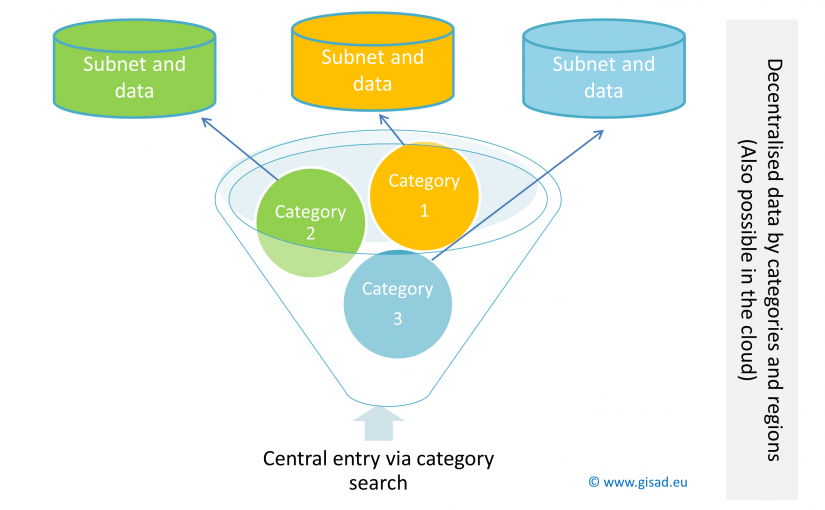This diagram from the blueprint for a digital society is an example of a global decentralised structure within the digital transformation. It illustrates a patent application from 1999 for a human technology interface.
Through the development of autonomous systems and a no longer controllable complexity of global IT structures, the topic of decentralisation is becoming increasingly important.
How does GISAD define decentralisation?
- GISAD sees the global decentralisation as a further development of globalisation.
- Extracting raw materials, maintaining resources, protecting the environment and fighting against disease are global issues in which anonymous global data must be evaluated. As soon as a personalisation becomes possible, the relevant data for personalisation must be stored in a decentralised way.
- Thanks to autonomous digital systems, the age of industrial globalisation is being replaced with an age of customer-oriented, individual, decentralised production.
- Through the automation of tasks with a high level of redundancy, for example in call centres, in translation, contract design and in simple manual work, the wage advantage of low-wage countries disappears. These lost areas of added value within the framework of globalisation are shifting in the global decentralisation towards the proximity to the customer.
- Global decentralisation is taking into account, where necessary, existing global value chains.
- Where it provides an advantage, global value chains are abandoned in favour of regional added value whereby decentralised units are networked via global standards.
Why is the decentralisation of processes so important for GISAD?
- Decentralisation is a comprehensive process which breaks up the value creation chain, changes the organisational structures of companies and fundamentally intervenes in the design of digital products. There needs to be an interdisciplinary perspective on the transformation processes that is currently not found on the market.
- Global decentralisation seeks to retain the scale and value creation impact of central concepts.
- Also, scalable risks are to be spread through decentralisation and thus reduced.
Monitoring of projects:
Consistent decentralisation is a lengthy process, which eventually results in changes in the internal organisational structure, external organisational structure and design of technical infrastructure. GISAD should therefore already be involved in the planning stage of decentralisation measures.

